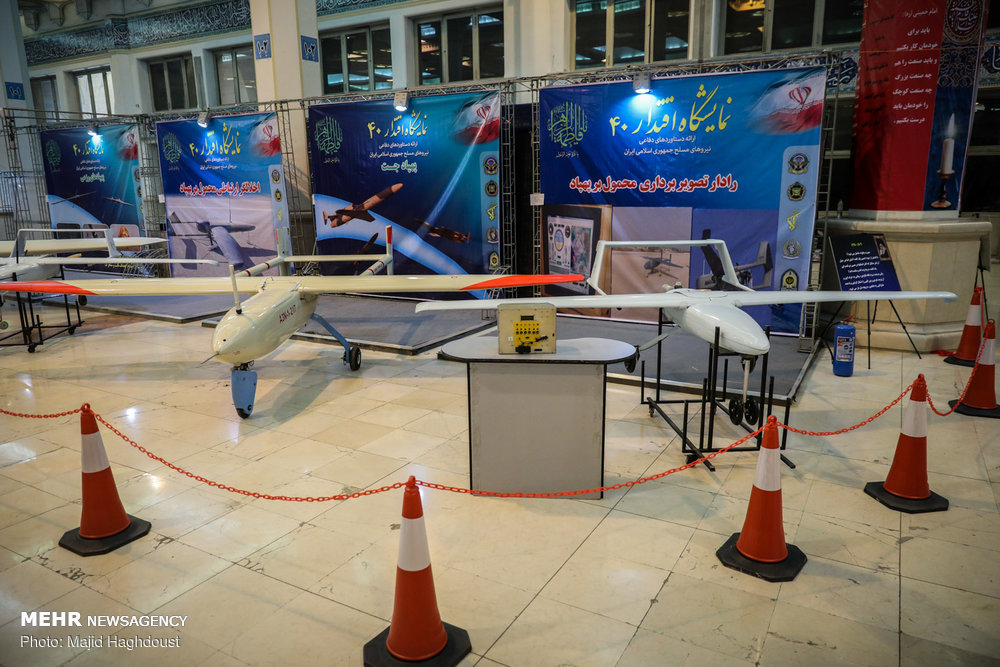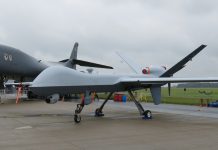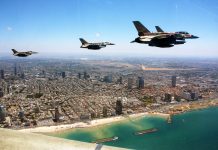
Ongoing hostilities persist in the Gaza Strip, where the Israeli army and Hamas forces are engaged in combat. Numerous images and videos documenting the conflict are flooding social media platforms.
Of particular note is a video that left a lasting impression on us. While the previous conflict between Israel and Hamas, nearly two years ago in May, primarily revolved around the use and interception of rockets, the current conflict has seen Hamas employing a new addition to its arsenal: loitering munitions, often referred to as kamikaze drones.
The video in question depicts the launch of several Iranian Ababil-2 kamikaze drones. This footage was sourced from the Turkish military intelligence website SavunmaSanayiST.com. In their commentary accompanying the video, Turkish sources assert that “Hamas is utilizing Iranian Ababil-2 loitering munitions to target Israel.”
A Brief Overview of the Ababil-2:
The Ababil-2, equipped with advanced flight-control systems, represents a notable advancement in modern aviation. According to Jane’s, the development of this innovative drone began with its maiden flight in 1997. However, Galen Wright contends that it entered production five years earlier, in 1992. Interestingly, despite differing perspectives, both sources agree that the Ababil-2 was officially unveiled to the public in 1999. It’s worth mentioning that some sources may also refer to it as the Ababil-II.
Characterized by a cylindrical fuselage, a streamlined swept-back vertical fin, and a pusher engine, the Ababil-2 boasts an impressively aerodynamic design. Propulsion is provided by a simple two-bladed pusher propeller, complemented by a rear-mounted wing and a front canard. This combination enhances the drone’s stall resistance, stability, and maneuverability. It’s important to note that all Ababil-2 variants have a range exceeding 100 km and are constructed primarily with metallic materials, with the exception of the Ababil-T, which incorporates composite (fiberglass) components.
The versatile Ababil-2 can take off from a zero-length JATO (Jet-Assisted Take-Off) platform or be launched from a Mercedes Benz 911 pneumatic truck launcher. Remarkably, this rocket launch system can operate from a ship’s deck and is modular, allowing for easy assembly and disassembly for portability. In terms of recovery, a parachute can be deployed to achieve a gentle descent rate of 4 m/s, while skids serve as an alternative option for standard landings on runways or open fields. Some airframes may also be equipped with landing gear for specific operational needs.
Ababil in the 2006 Lebanon War:
In 2002, Hezbollah acquired the Ababil-2 drones, specifically the twin-tail variant, designated as Mirsad-1 in their operational inventory. Israel’s intelligence indicated that prior to the commencement of the 2006 Lebanon War, Hezbollah possessed at least 12 Ababil drones. During the conflict, three of these unmanned aircraft were deployed.
The first Ababil was intercepted and shot down by the Israeli Air Force on August 7, 2006, off the northern coast of Israel, utilizing an Israeli F-16 fighter aircraft. The second Ababil experienced an unfortunate mishap when it crashed inside Lebanese territory on August 13. The third Ababil was brought down by another Israeli F-16 just inside Israel’s northern border, shortly after its launch by Hezbollah. As of 2009, there were speculations that Hezbollah had a stockpile of Ababil UAVs, with various estimates ranging from 12 to as high as 24-30. By 2018, Hezbollah officially announced the retirement of the Mirsad-1 from active service.
Ababil in Iraq:
On March 16, 2009, an incident occurred in Iraq where an American-made F-16, operational in Iraq, intercepted and downed an Iranian Ababil-3 drone. This Iranian drone had been flying in Iraqi airspace for an extended duration, approximately 70 minutes, on February 25, 2009.
Following the interception, the wreckage of the drone was discovered approximately 60 miles northeast of Baghdad. The crash site was located approximately 12 miles within Iraq’s official border, near the town of Balad Ruz in the Diyala Governorate. Officials within Iraq’s Defense and Interior ministries raised the possibility that the drone might have been engaged in reconnaissance to identify potential smuggling routes for the transport of Iranian weaponry into the country.
The New York Times proposed an alternative theory, suggesting that the drone could have been tasked with surveillance of Iranian dissidents residing in Iraq, such as at Camp Ashraf, which was near the crash site. Abdul Aziz Mohammed Jassim, the officer overseeing military operations within the Iraqi defense ministry, pointed out that the drone had penetrated 10 kilometers into Iraqi airspace, suggesting that it might have been an inadvertent error.
In more recent developments, Ababil-3 UAVs have gained significant prominence in the context of the unfolding events of the Iraqi Civil War. Their usage began to be observed in the summer of 2014, particularly following the significant event of the fall of Mosul, where they were observed operating from Rasheed Air Base.




